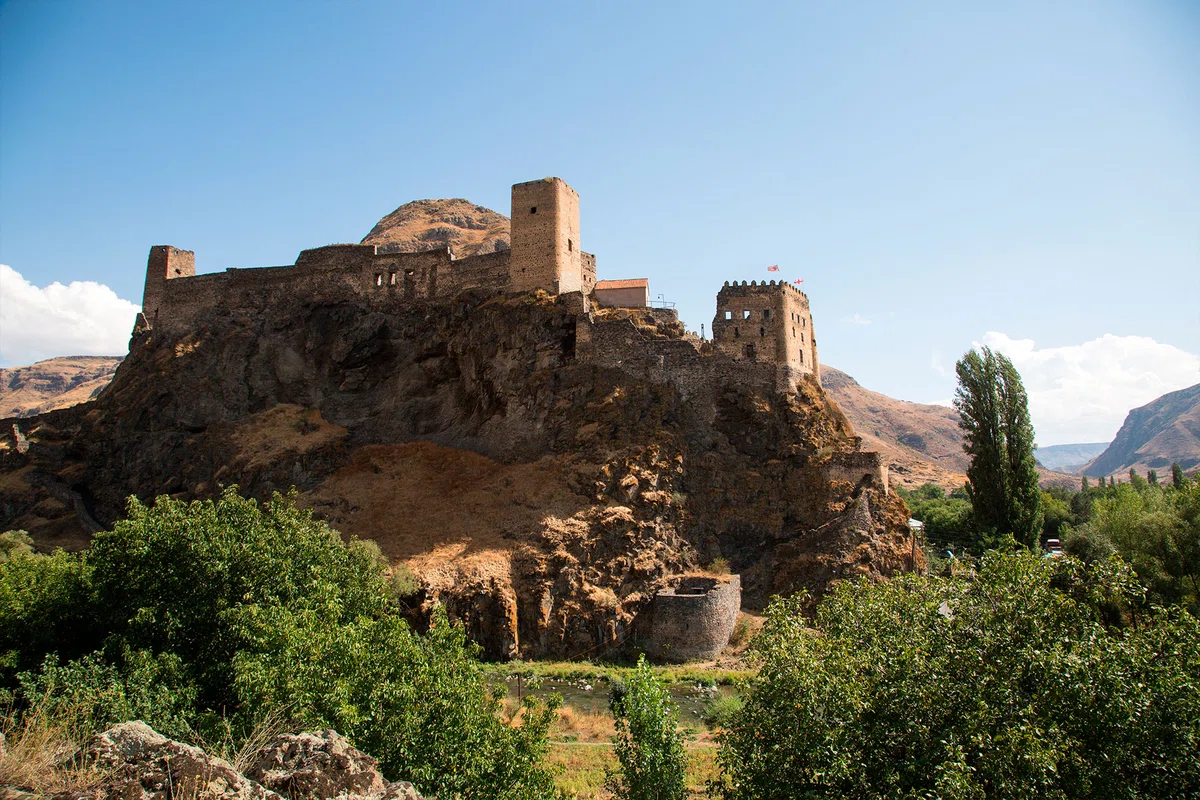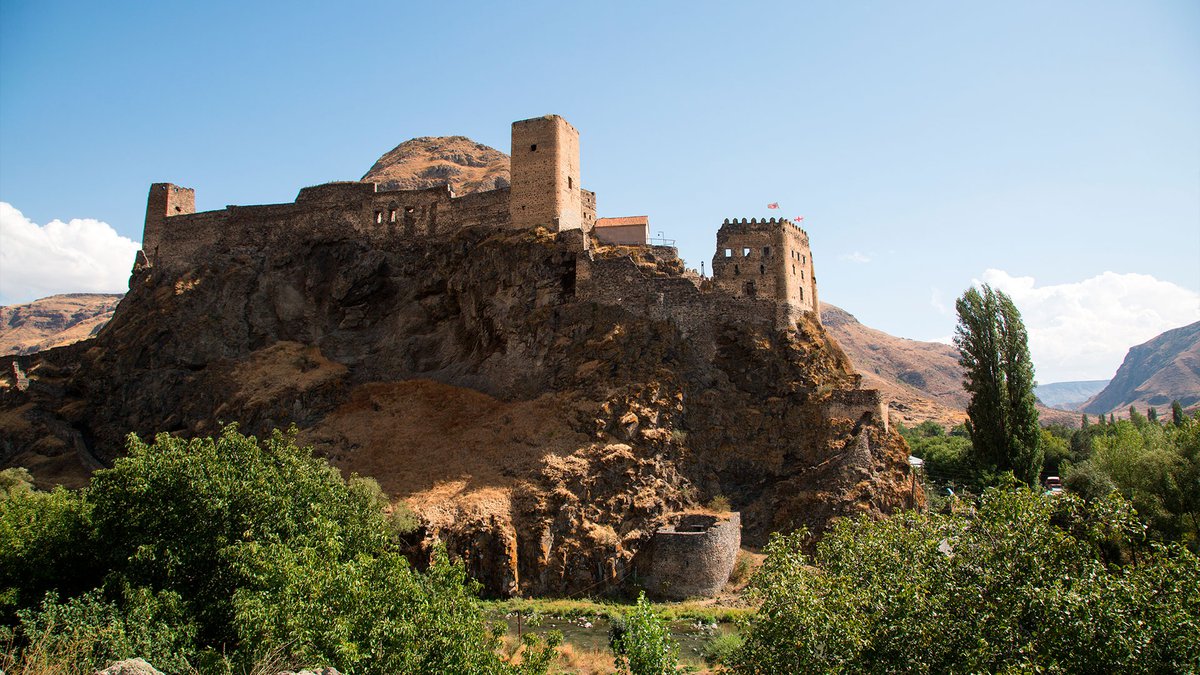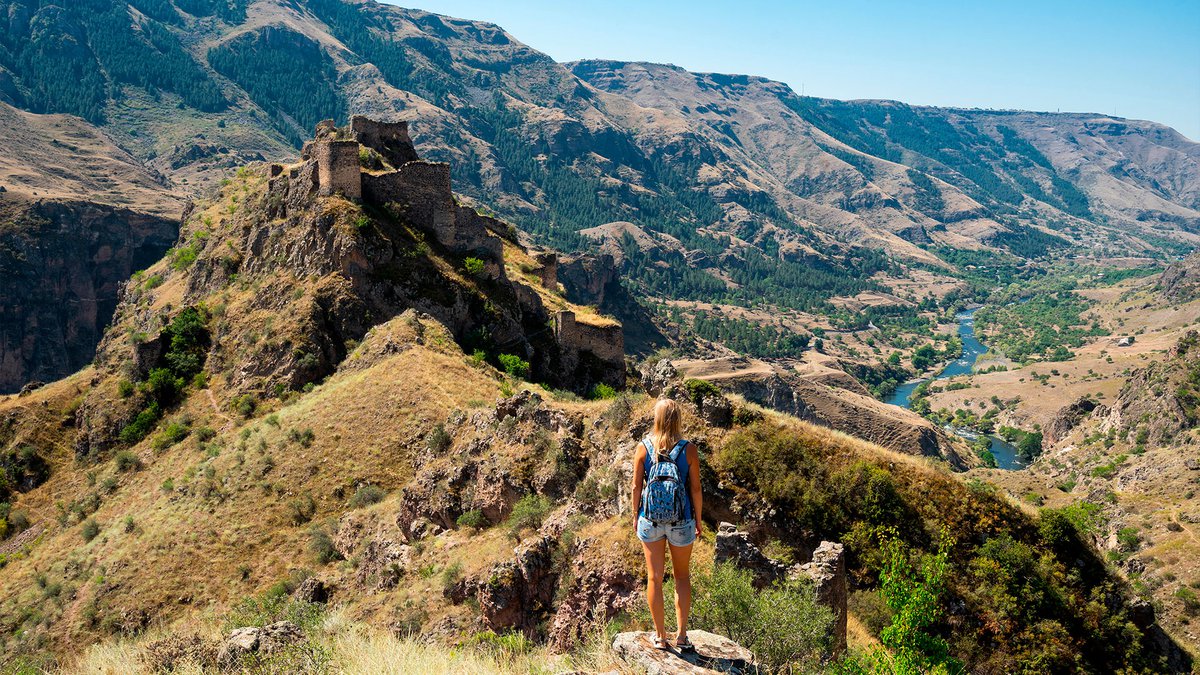
Khertvisi Fortress is a fortress worth visiting in Georgia. The fortresses of Khertvisi and Tmogvi.
There are many fortresses in Georgia, each of them has reached us in a different state. The Hertwis fortress has reached us in very good condition. Like many, it is located in a remote place, on a hill. Presumably, it was built in the fourth century BC. Tmogvi Fortress is located on one of the highest volcanic rocks. Unfortunately, only the ruins of the city have been preserved, it was destroyed several times due to earthquakes
The word "Khetvisi" in Georgia called the confluence of two rivers. From this word came the name of the fortress, which is located near the confluence of the Paravani and Kura rivers.
One of the masterpieces of Georgian architecture Khertvisi is located on the border Samtskhe and Javakheti, at the mouth of the Parana (Artaana) and Javakheti Kura rivers, near the village of Khertvisi (Aspindz municipality). The fortress served as a support for the family of Dzhakeli - the rulers of the Samtskhe region and for centuries controlled the main road of Southern Georgia, passing through the valley of the Kura River.
Cherubic the fortress is well preserved. It is located on a high rocky mountain. It is impossible to approach it from the north-eastern side. The citadel with supporting columns stands on a narrow rocky peak and consists of several sections. In the center stands a twenty-meter tower, which according to the plan is square with rounded corners and has no analogues in Georgian architecture. There is also a church made of hewn stone and a large reservoir carved into the rock.
The second, five-storey tower, is located at the end of the eastern part of the fortress. The inner fortress is surrounded by a fence on the southern and partially eastern sides. Two tunnels were built from the eastern side of the fortress to the Javakheti Kura River, one of which was a secret passage, and the other served as a water pipe during the war.
The Hertvis fortress was supposedly built in the IV century BC: it was first mentioned in historical monuments in the list of fortresses that existed during the campaigns of her campaigns of Alexander the Great in Iberia. According to legend, the first walls of the fortress were built by the soldiers of Alexander the Great. In 1578, the Turks took possession of the fortress, and Hertwisi, as the whole of Southern Georgia was under the yoke of the Ottomans for three hundred years.
In 1980-1998, a thorough restoration of the fortress was carried out. Since 2007, the fortress of Khertvisi together with the monastery complex Vardzia It is included in the tentative list of UNESCO World Cultural Heritage.

At the turn of the XII-XIII centuries, some feudal lords rebelled against Queen Tamara. Together with other loyal feudal lords, the queen was supported by Sargis Tmogveli (Varam, son of Mhargrdzeli). After the suppression of the uprising, the tsarina, as a sign of gratitude, granted him the gift of the Tmogva fortress. After that, Sargis was referred to as Tmogveli.
The main river of Georgia - the Kura - flows near Vardzia, from a sloping slope through a canyon-like valley. The canyon is formed between the Erusheti volcanic mountain range and the Javakheti volcanic plateau. The depth of the canyon in some places reaches 500 meters. The slopes of the canyon are steep, steep at the top, and gentle at the bottom. Volcanic boulders sometimes fall from the upper part of the slope, cluttering the bottom of the canyon. There are several artificial cave complexes in this section of the river valley, including Vardzia, Van boilers, etc. On one of the highest volcanic rocks of the valley, the ruins of the historic fortress city - Tmogvi have been preserved.
In the IX-X centuries Tmogvi was an urban-type settlement. Presumably, the fortress was built at this time. It is mentioned in historical monuments in 914, in connection with the campaign of the Arab commander Abul-Qasim. Then the Arabs tried to storm the fortress, but then their attempts failed.
Tmogvi Fortress stands on the top of a low mountain and organically merges with the rocky terrain. The western part of the fortress is fortified with a fence and pillars erected in three levels on the sloping slope of the cliff.
From the south-eastern part, the fortress wall is located next to the entrance to the secret cave, through which you can go to the citadel and to the Kura. Ruins of bridge piers have been preserved on the river. One of them connected two palaces on both banks of the arm, and the other bridge was intended for transport. In the XVI century, the Tmogvi fortress was the site of constant battles of Georgia against the Turks and Iranians. After the Iranian-Turkish peace treaty, the Turks dominated the fortress of Tmogvi. Only in 1829, after the conclusion of the Adrianople Peace Treaty, the Tmogvi fortress returned to Georgia. The fortress city was destroyed several times as a result of an earthquake.
Magnificent Georgia endlessly amazes with its ancient finds and sights. In any secluded corner, there will definitely be something incredible, historical and valuable for the inhabitants of the country.
You can always find out more about this on the pages of the madloba catalog. Go to our website right now and get acquainted with Georgian traditions, legends and features. Make your journey brighter!













36 comments
Log in to leave a comment